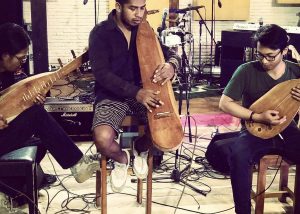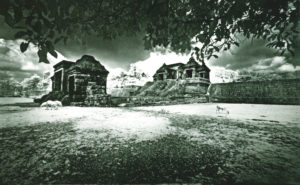Legend of Ratu Boko Ancient Palace

There is a legend about Ratu Boko and Bandung Bondowoso. In one version, Ratu Boko is a giant who lives in the palace in the hall of this site. He is a giant who likes to eat humans and Bandung Bondowoso is a knight who kills him. The link between the famous Legend of Ratu Boko and the original Ratu Boko site was studied by Dutch archaeologist N.J. Krom. He tries to find out whether the story is based on a real or not existing kingdom. According to a report written by Krom, there is an inscription bearing the name Nagari used by the Sailendra family. The inscription is found inside this Ratu Boko site.
However, some people doubt that there ever was a palace that stood on the plain. In other words, they doubt the truth of the Legend of Ratu Boko. One of the reasons behind this doubt is the bedrock of the plain which is limestone rock. Limestone rock is very porous rock, so water can not last long provided there.
If there is ever a kingdom here, this place must accommodate hundreds of people who lived there. In the 1950s, before the site was occupied by the Republic of Indonesia, the people who lived here were just a few farm families. The main problem faced by them is only one: the lack of water.
Even so, there is another more plausible possibility, namely the assumption that the site of Ratu Boko is part of a vast palace complex. Royal activity can be performed in the lower plains, while the plains above are used for special rituals of the royal family. Perhaps the Legend of Ratu Boko is not wrong, only the legend is not complete.
Visitors who came from Europe in the 19th century tended to accept what the legend says that this place is the palace of King Boko. However, professional archaeologists who came to this place such as Brandes in 1903, Bosch in 1918, Sutterheim who came in 1926, and Krom who came in 1931 supported the idea that the main plains serve as centers of religious activity.
Bernet Kempers (1978) considers the possibility that this place is the garden of a palace. This idea seems to make more sense if you look at the characteristics of Javanese garden that have been analyzed by Denys Lombard. He noted that the royal garden in Java incorporated bathing facilities, religious activities such as meditation in caves, and high walls that might have been used for bastions, although they did not intend to do so. The three areas in Ratu Boko complex are more or less suitable for kingship, religious activities including meditation, and baths.


